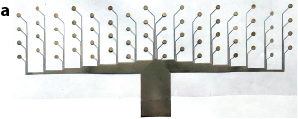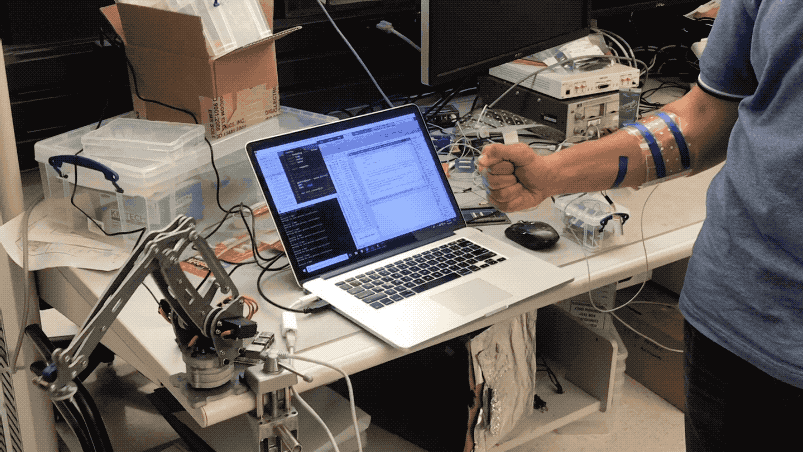FlexEMG
EMG-Based Gesture Recognition Device Using Hyperdimensional Compuitng Controlling a Prosthetic Arm
FlexEMG [1] is a system for EMG-based gesture classification combining a flexible high density electrode array, a dedicated biopotential acquisition device, and a brain-inspired classification algorithm. Large area coverage and dense electrode spacing ensures sufficient muscular coverage without requiring precise placement. Furthermore, the wireless and compact signal acquisition device promotes comfort and ease of use. Finally, the HD algorithm achieves high classification accuracy without substantial degradation over multiple sessions, and can be trained using minimal amounts of data.



We have shown the classification of 21 finger and hand gestures with ~90% accuracy in various experiments and contexts [2].


As a key application driver, we have 3-D printed a prototype prosthetic arm with 3 degrees of freedom, and controlled it based on user’s hand gestures online [3]. We have also demonstrated other applications using our gesture recognition device such as controlling robotic arms.



This project was in collaboration with Prof. Alvaro Araujo group (Universidad Politecnica de Madrid) for the prosthetic arm, Prof. Luca Benini group (ETH Zurich, University of Bologna) on the algorithm, and Prof. Ana Arias group (UC Berkeley) for the flexible electrode array.
-
An EMG Gesture Recognition System with Flexible High-Density Sensors and Brain-Inspired High-Dimensional Classifier In IEEE International Symposium on Circuits and Systems (ISCAS) 2018 [arXiv]
-
A wearable biosensing system with in-sensor adaptive machine learning for hand gesture recognition Nature Electronics 2020 [Link]
-
A Robust EMG-Based Hand Gesture Classifier Controlling a 3D-Printed Bionic Arm Actuator In Society for Neuroscience (SfN) annual meeting 2018 [PDF]